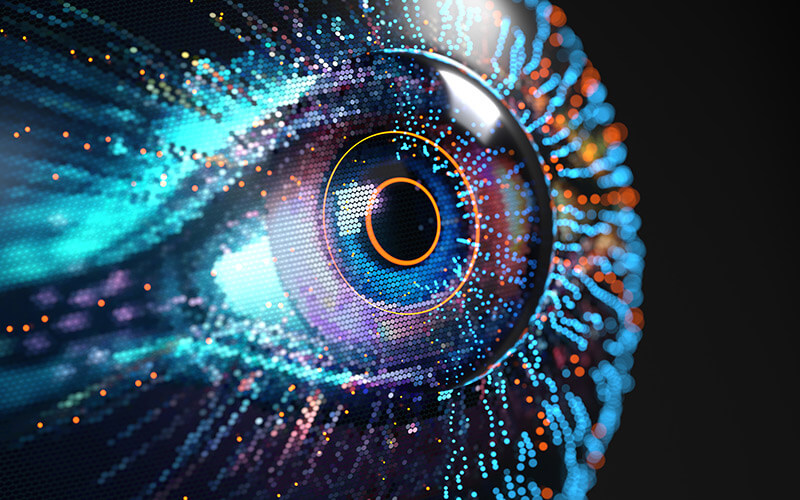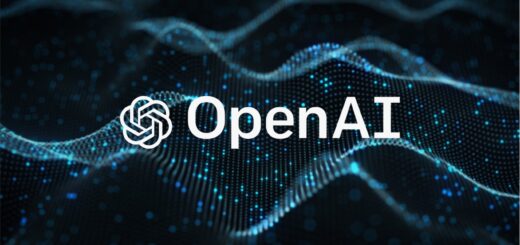The Expansion of AI-Powered Low-Code and No-Code Platforms

The way businesses and individuals interact with artificial intelligence (AI) is rapidly evolving. While AI has traditionally required specialized programming knowledge and deep technical expertise, a new generation of AI-powered low-code and no-code platforms is making sophisticated AI tools accessible to a much broader audience. These platforms are reshaping how companies develop applications, automate workflows, and leverage data-driven insights, allowing even non-technical users to integrate AI into their operations.
The democratization of AI through low-code and no-code solutions is opening the door for entrepreneurs, business analysts, and creative professionals to harness the power of AI without needing to write extensive code. By simplifying the development process, these tools are enabling faster innovation, reducing technical barriers, and allowing businesses to automate processes, create custom applications, and optimize decision-making with minimal effort.
In this article, we explore the rise of AI-driven low-code and no-code platforms, how they are transforming industries, and the challenges that come with this shift in AI accessibility.
1. The Rise of AI-Powered Low-Code and No-Code Platforms
Low-code and no-code development platforms have been around for some time, but their integration with AI and machine learning is a more recent and transformative trend. These platforms allow users to build and deploy AI applications without requiring deep expertise in data science, software engineering, or algorithm development.
A. What Makes These Platforms Powerful?
- Drag-and-Drop Interfaces: Users can build AI-driven applications using visual components and workflows instead of writing complex code.
- Pre-Built AI Models: Many platforms provide pre-trained machine learning models for tasks like text analysis, image recognition, and predictive analytics.
- Seamless Integration with Existing Systems: These tools can easily connect with databases, APIs, and third-party services, allowing businesses to leverage AI within their existing workflows.
B. Examples of AI-Driven No-Code and Low-Code Platforms
- Google AutoML: Allows businesses to train custom machine learning models without requiring extensive programming knowledge.
- Microsoft Power Automate & AI Builder: Helps users automate processes using AI-powered decision-making and workflow automation.
- Bubble & Adalo: Low-code platforms enabling the creation of AI-enhanced web and mobile applications.
- DataRobot: Provides a no-code AI modeling platform that allows organizations to build predictive models with minimal coding effort.
These tools are enabling businesses and individuals to experiment with AI at scale without needing a dedicated AI development team.
2. How AI-Driven No-Code Tools Are Transforming Industries
The impact of AI-powered low-code and no-code platforms is being felt across multiple industries, allowing businesses to create intelligent applications, automate processes, and analyze data more efficiently than ever before.
A. AI in Business Automation and Process Optimization
- Businesses are using no-code AI tools to automate customer support, optimize workflows, and enhance decision-making without relying on IT teams.
- AI-powered chatbots can be deployed without extensive programming, handling customer queries, appointment scheduling, and lead generation.
- HR teams are automating resume screening and candidate selection using AI-driven workflow automation.
B. AI in E-Commerce and Marketing
- AI-powered recommendation engines can be integrated into e-commerce platforms to offer personalized product suggestions without requiring extensive coding.
- No-code AI analytics tools help businesses analyze customer behavior, segment audiences, and optimize ad campaigns using machine learning models.
- AI-driven content generation tools are enabling marketers to automate blog writing, social media posts, and personalized email campaigns.
C. AI in Healthcare and Medical Research
- AI-powered no-code platforms are helping medical professionals analyze patient data, predict disease risks, and optimize treatment plans without deep AI expertise.
- Healthcare organizations are using AI-driven image recognition models to analyze X-rays and MRIs, allowing doctors to make faster and more accurate diagnoses.
- AI-powered telemedicine applications are being built using low-code platforms, enabling better remote patient care.
D. AI in Education and Learning Management
- AI-powered no-code chatbots are being used in e-learning platforms to provide personalized student support.
- No-code platforms are enabling educators to create AI-driven interactive courses and virtual assistants that help students with coursework.
- Universities and online learning providers are using AI-powered automated grading and assessment tools to improve efficiency.
By making AI more accessible and easier to integrate, low-code and no-code platforms are accelerating digital transformation across multiple sectors.
3. Challenges and Limitations of AI-Powered No-Code Platforms
While AI-driven low-code and no-code platforms offer significant benefits, they also present challenges that businesses must consider before widespread adoption.
A. The Risk of Over-Simplification
- No-code AI tools may limit customization and fine-tuning, making them less effective for complex AI tasks.
- Businesses with unique AI requirements may still need custom-built solutions to achieve optimal performance.
B. Data Privacy and Compliance Risks
- Many AI-driven no-code platforms rely on cloud-based models, raising concerns about data security and regulatory compliance.
- Businesses must ensure that their AI applications comply with GDPR, CCPA, and other data protection regulations.
C. Dependence on Third-Party Platforms
- Companies relying on third-party no-code AI platforms risk vendor lock-in, where they become dependent on a specific provider’s infrastructure.
- If a platform discontinues support or increases pricing, businesses may face challenges migrating their AI workflows elsewhere.
D. Ethical Considerations and Bias in AI Models
- Pre-built AI models may inherit biases from their training data, leading to unfair or inaccurate predictions.
- Businesses must audit AI models for bias and implement mechanisms for ethical AI governance.
Despite these challenges, AI-powered low-code and no-code solutions are still revolutionizing AI accessibility, making it easier for businesses to experiment with AI-driven automation and intelligence.
4. The Future of AI-Powered No-Code Development
As AI-powered low-code and no-code platforms continue to evolve, we can expect:
- More powerful AI models embedded into no-code tools, expanding capabilities in predictive analytics, image processing, and automation.
- Increased accessibility, enabling more businesses and individuals to deploy custom AI applications without needing a programming background.
- Greater focus on AI ethics and bias reduction, ensuring that AI models remain fair, transparent, and accountable.
- More advanced integrations with enterprise systems, allowing businesses to seamlessly connect AI-driven applications with existing software.
By reducing technical barriers to AI adoption, these platforms are helping businesses stay competitive, innovate faster, and unlock new possibilities in automation and intelligence.
Final Thoughts: A New Era of AI Accessibility
The emergence of AI-powered low-code and no-code platforms is fundamentally transforming how businesses and individuals build and deploy AI applications. By making AI more accessible, intuitive, and scalable, these tools are democratizing AI and enabling faster innovation across industries.
While challenges such as data privacy, model bias, and platform dependencies remain, the potential for expanding AI adoption without deep technical expertise is undeniable. The businesses that embrace AI-driven no-code tools today will be at the forefront of the next wave of digital transformation and intelligent automation.




